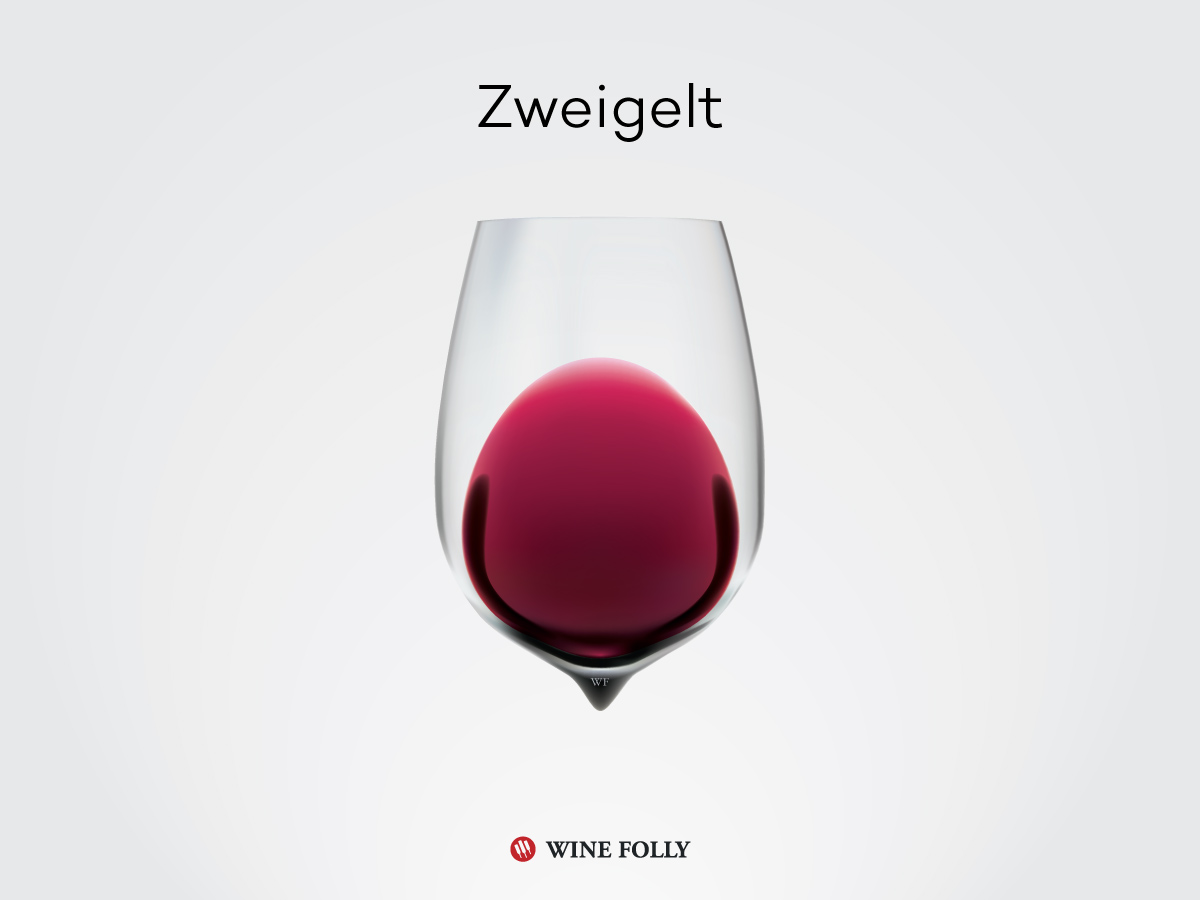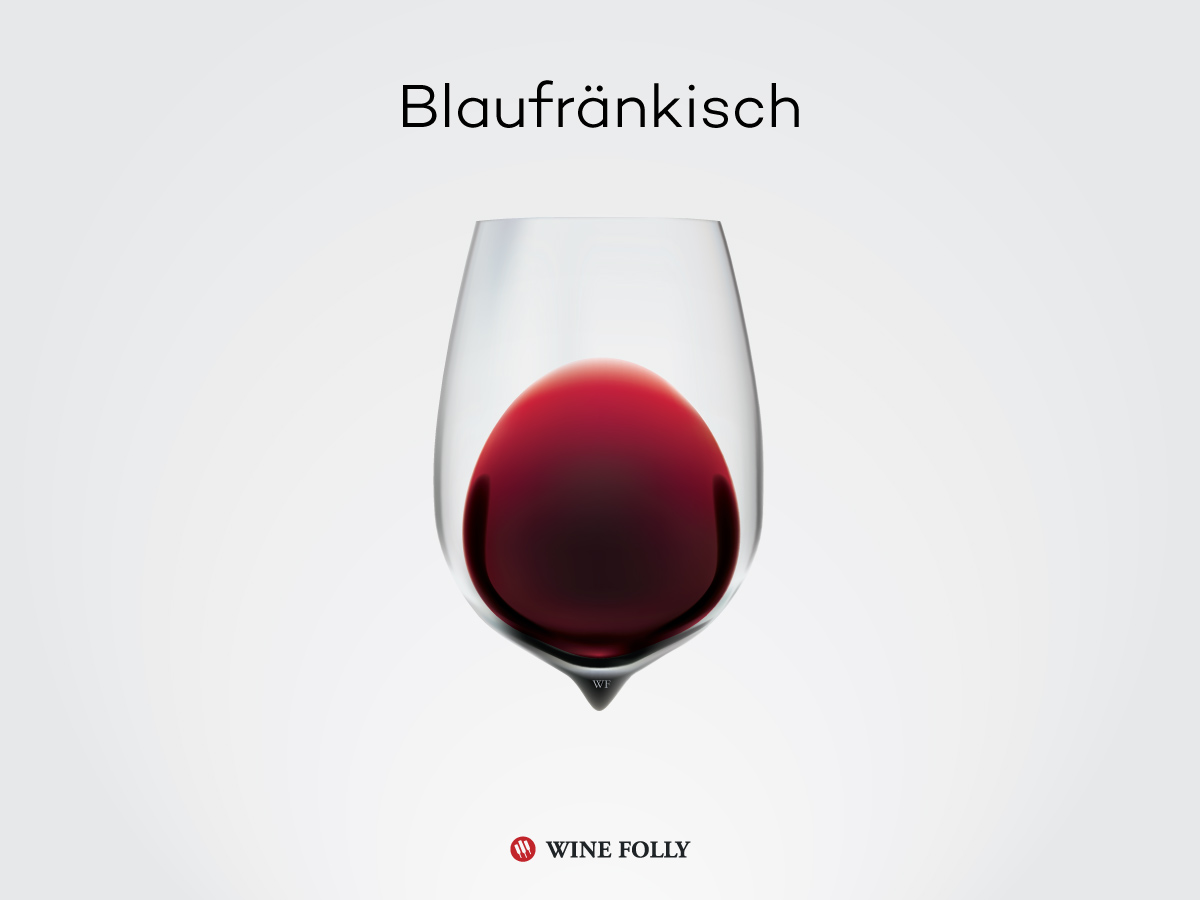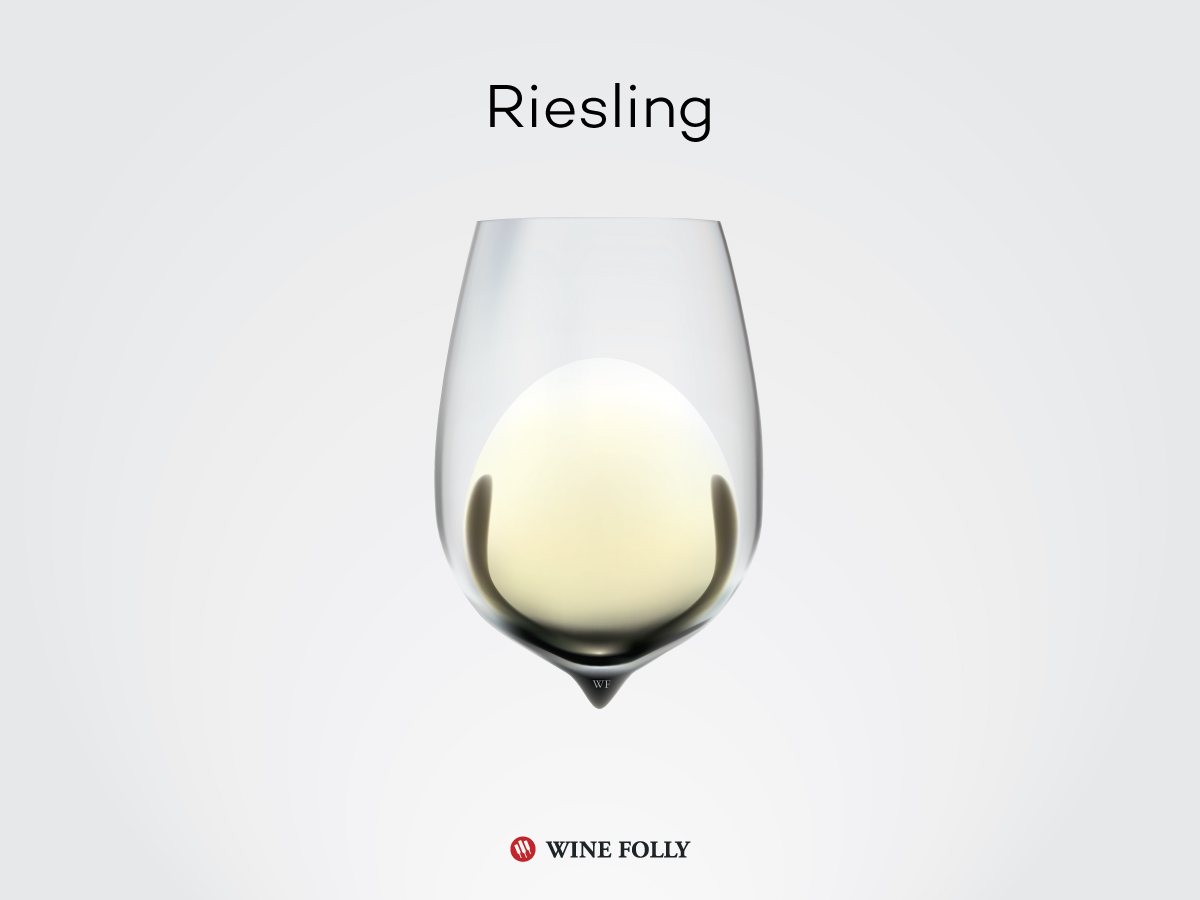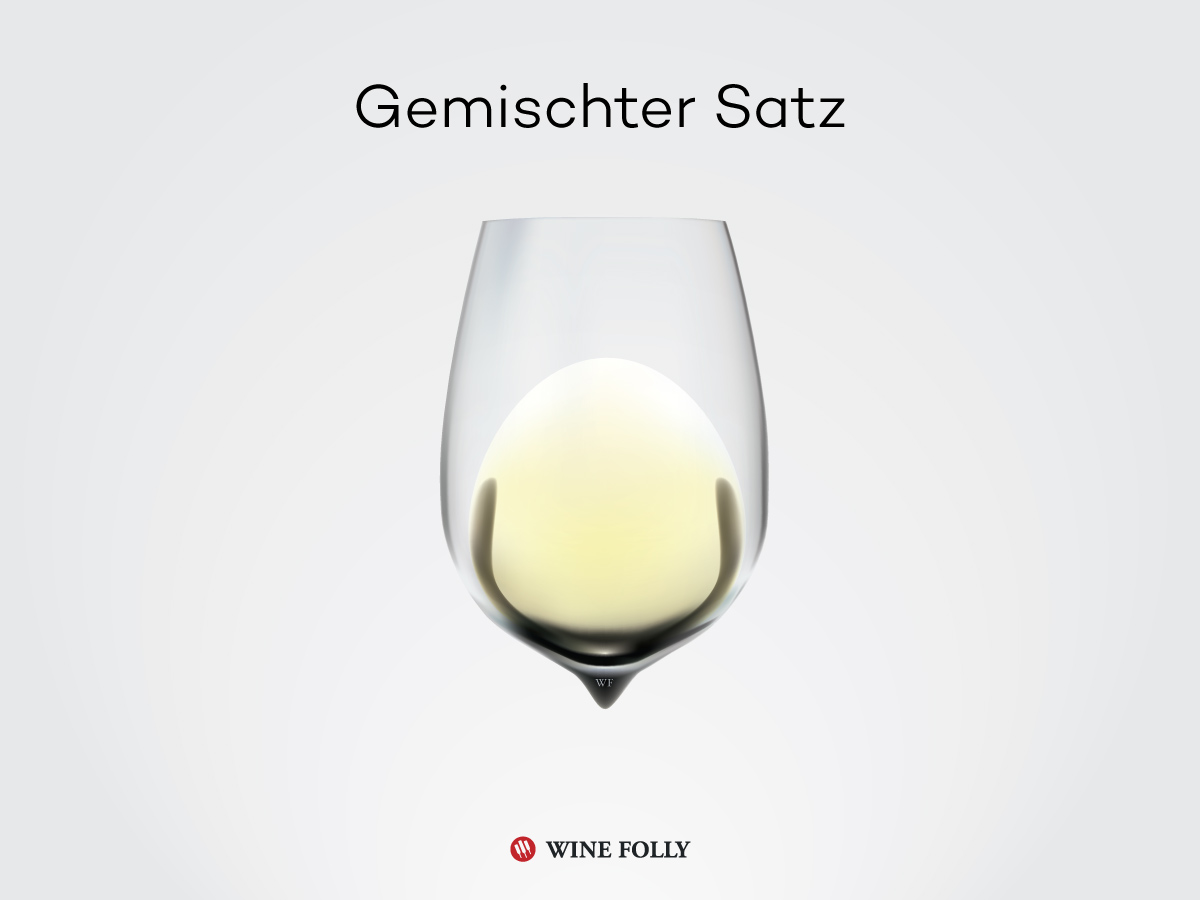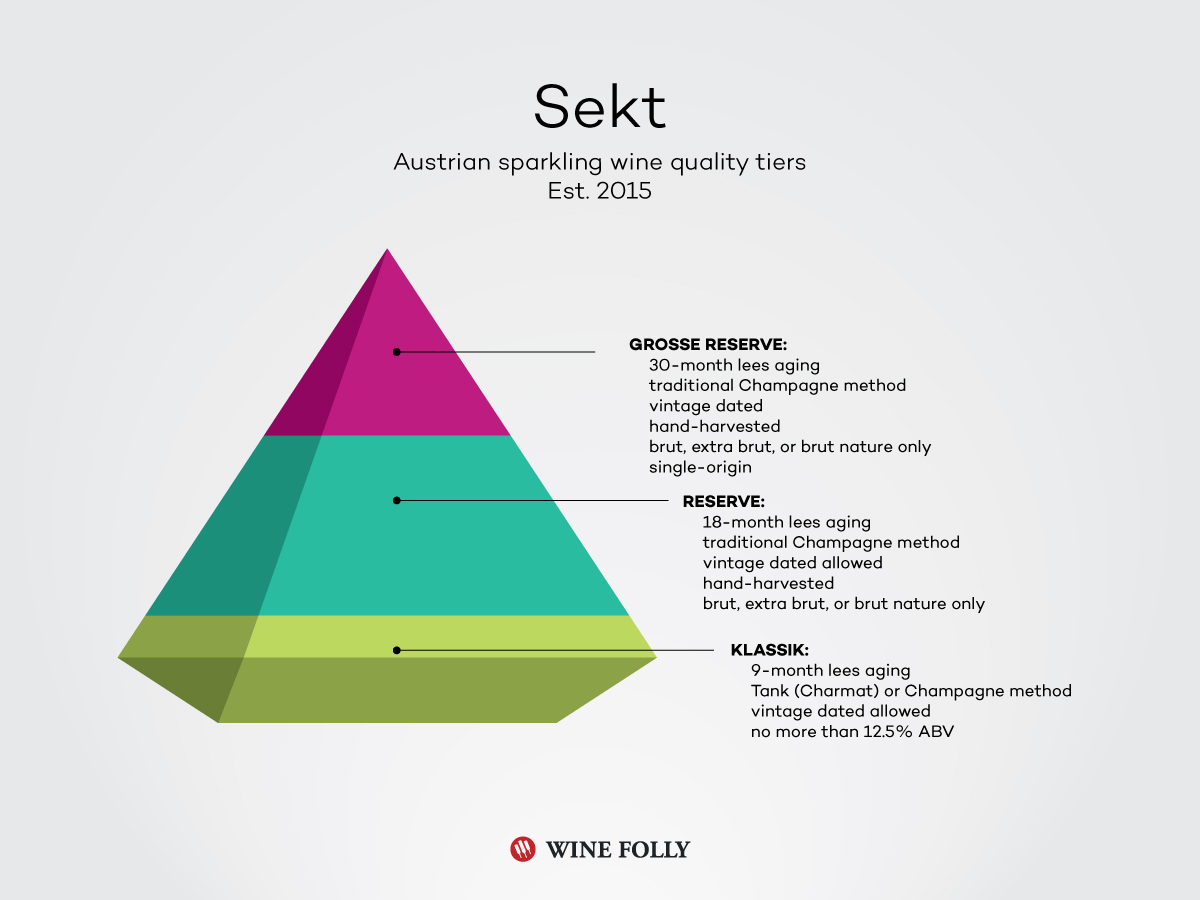The next time you strap on your lederhosen (or dirndl), don’t feel out of place if you prefer a glass of wine to a mug of beer. Austrian wine may be something of a rarity stateside, but its history is as old as the country itself.
In fact, Vienna has more urban vineyards than any metropolitan city in the world (with 1,600 acres of vineyards). So, let’s hone in on the most important wines of Austria that you deserve to know about.
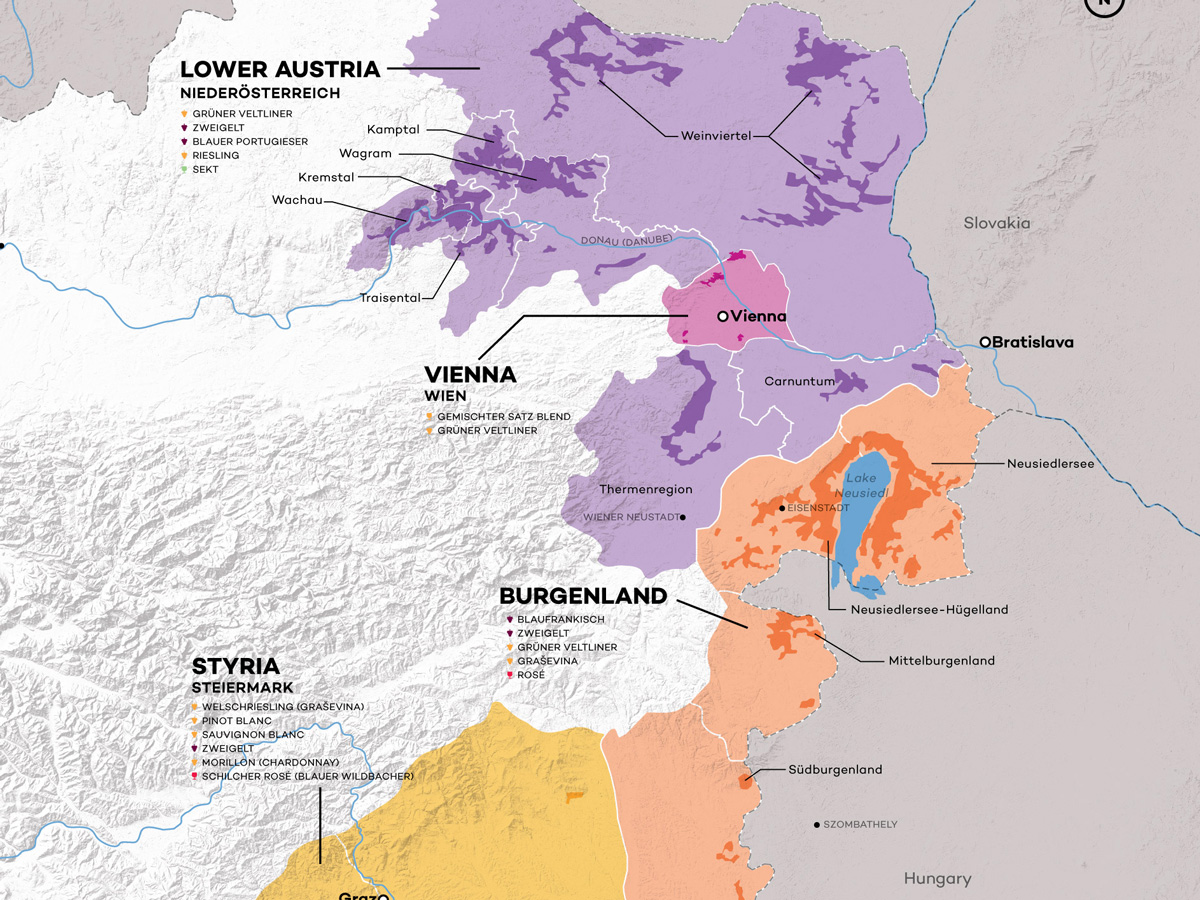
Austrian wines are mostly made in the eastern side of the country (where the major population areas are) and the cooler continental climate produces racy, dry white wines and elegant, fruity reds.
This is not a region for rich, opulent wines like what you’ll find in much of California and Australia. Instead, Austrian wines lean towards tart, herbaceous flavors in a style more akin to France. So, if you’re a Francophile when it comes to wine preference, Austrian wine has that certain je ne sais quoi.
What do you mean by cool climate?
Austrian wine regions are primarily around the 47th and 48th parallel. Imagine a place that may have hot summers, but they’re a little shorter and the winters are cold. For a little perspective:
- 48th Parallel is just north of the tip of Maine
- 48th Parallel is 30 miles north of Seattle, WA
- 48th Parallel cuts through Haut-Rhin in Alsace, France.
- 47th Parallel is in Olympia, Washington
- 47th Parallel is in Duluth, Minnesota
- 47th Parallel is Beaune in Burgundy, France
- 47th Parallel spans the Alps in Switzerland
Wines from cooler areas tend to taste lighter with a focus on pure tart fruit flavors, higher acidity, and lower alcohol.
Grüner Veltliner
(“grooner vet-leener”)
Spicy, herbaceous light-bodied white wines with high acidity
Of the 35 allowed wine varieties grown in Austria, Grüner Veltliner is the most important. The most important growing regions for Grüner Veltliner are within Lower Austria (a.k.a. Niederösterreich) where wines have reached cult status amongst a devote following. Budget friendly Grüner Veltliner wines have a characteristic peppery burst acidity that drops out to softer flavors of green melon. As you go up in quality, higher end Grüner Veltliner wines are often aged in oak and are comparable to fine Chardonnay wines from the Beaune (in Burgundy).
Zweigelt
(“zswye-gelt”)
Light-bodied red wines with loads of tart red fruit flavors
The second most planted wine grape in Austria (that is still rapidly growing in popularity) is the light-hearted Zweigelt. Zweigelt makes for fabulous dry rosé wines as well as reds. Wines have higher acidity and lower tannins and offer up flavors of cherry, raspberry (on warm vintages) and a spiciness similar to cinnamon or sichuan peppercorn. Because of Zweigelt’s low tannin, wines don’t typically age well but do pair excellently with lighter meats (and even fish!). If you’re a fan of Beaujolais, Zweigelt is your friend.
Blaufränkisch
(“blau-frank-eesh”)
Medium-bodied red wines with blueberry and spice
One of Austria’s finer red wines, Blaufränkisch (a.k.a Lemberger) has deeper plum, blueberry and blackberry flavors with peppery spiciness, chewy tannins and a subtle forest-like earthiness. The best wines tend to come from regions within Burgenland bordering Hungary where temperatures are warm enough for high-quality cool climate red wine varieties (like Pinot Noir – in fact plantings of Pinot continue to grow).
Saint Laurent
A lot like Pinot Noir
Another fascinating red wine in Austria that’s much harder to find but well worth the search is Saint Laurent (a.k.a. Sankt Laurant). For some time it was thought that Saint Laurent was related to Pinot Noir because it seemed so similar. These wines offer deep red fruit flavors, fine integrated tannins, balanced acidity and can easily be likened to a richer style of Pinot. The grape continues to grow in popularity in Austria (and Germany) so if you’re a fan of Pinot Noir, you’ll seriously appreciate Saint Laurent.
Riesling
(“reese-ling”)
Dry, racy aromatic whites
Austria is one of the few producers of fine Riesling in the world. This is not your simple sweet drinking white. In fact, Austrian Riesling is rarely sweet at all. The wines grow best in the same areas as Grüner Veltliner (in lower Austria) and are crafted into a racy, dry style that will impress serious wine aficionados. Despite the prestige of many Austrian Riesling wines, they’re particularly hard to find. We think it’s because no one stateside (besides sommeliers) can fathom spending $40+ on a bottle of Riesling. Would you?
Gemischter Satz
The Viennese daily white
If you find your way to Vienna, you’ll be delighted by how integrated wine is into the Viennese culture. The city has many Heurigen (–the wine bar equivalent to a casual tavern). The local favorite wine is a white wine blend called Wiener Gemischter Satz.
Back in the day, vineyards were planted somewhat randomly with a variety of white grapes which are fermented together. Today, some Viennese wineries still follow this classic practice to produce a truly local dry white wine. The major grapes used in a Gemischter Satz blend typically include Grüner Veltliner, Riesling, and Pinot Blanc.
Sekt
In 2015, Austria started taking sparkling wines seriously
Sekt is the Austrian word for sparkling wine. Since the 2015 vintage, you can expect to see some outstanding Sekt wines coming out of Austria. Why 2015? Well, the newly formed Austrian Sekt Committee just released a rigorous set of quality restrictions and tiers for sparkling wines and it mimics Champagne.
The highest quality tier Große Reserve (Grosse Reserve) started launching in 2018, and Austria will be a to follow in the future for fine bubbles.
- Klassik: This is the most basic style with any sparkling wine method allowed (traditional method, tank method) and a minimum of 9 months lees aging.
- Reserve: The second tier up must use hand-harvested grapes and the traditional bottle fermenting method (same as Champagne) with a minimum of 18 months on the lees (3 months longer than non-vintage Champagne).
- Große Reserve: The finest tier of Austrian Sekt is hand-harvested, bottled fermented, can be vintage dated and ages for a minimum of 30 months (vintage Champagne is 36 months).

